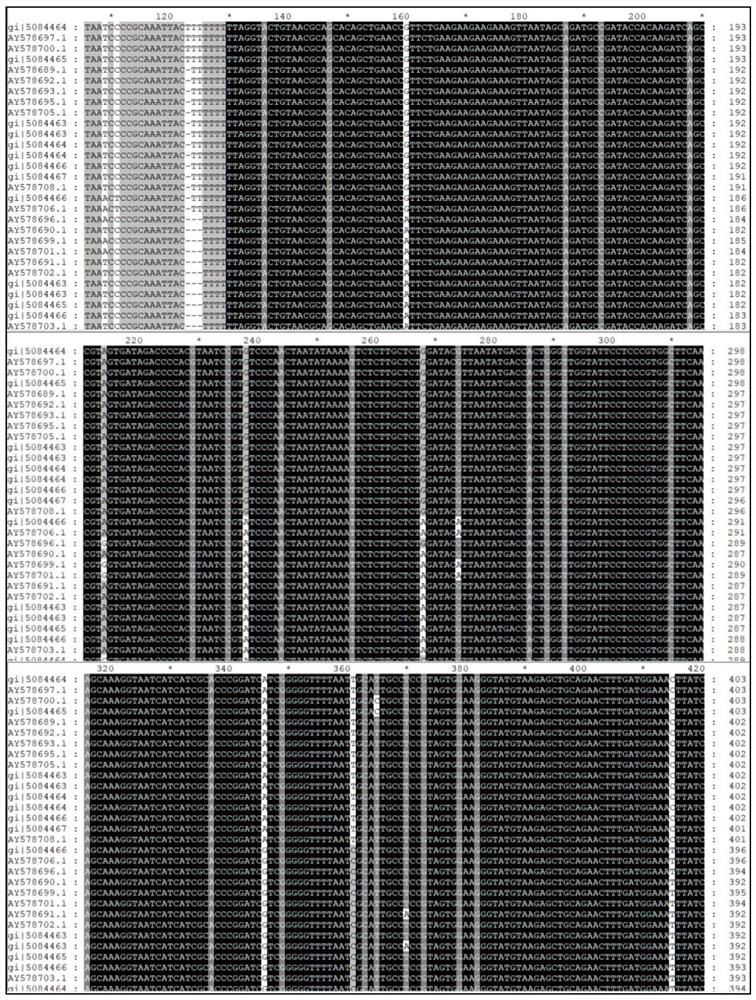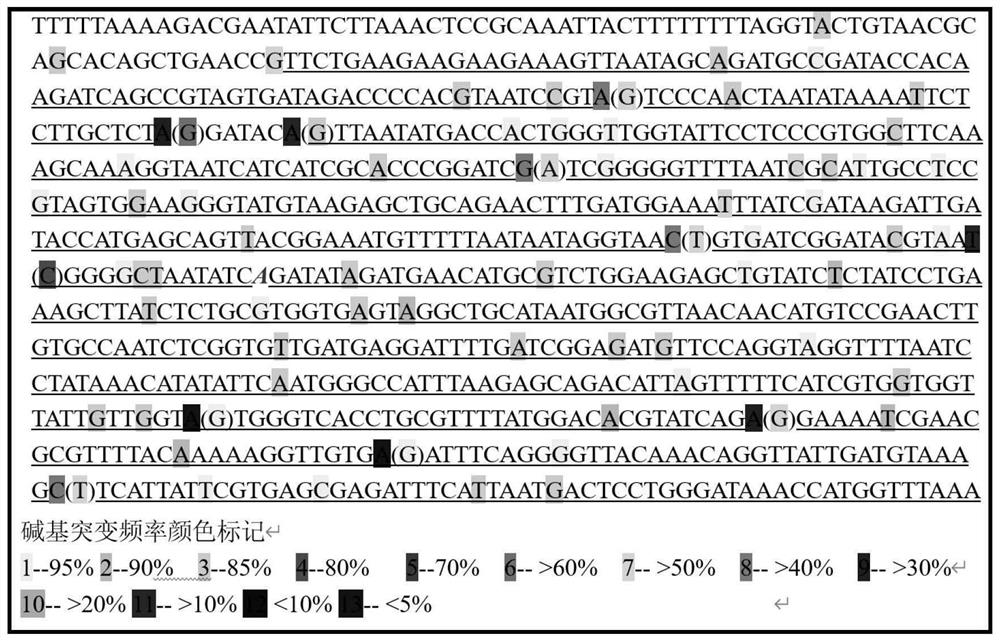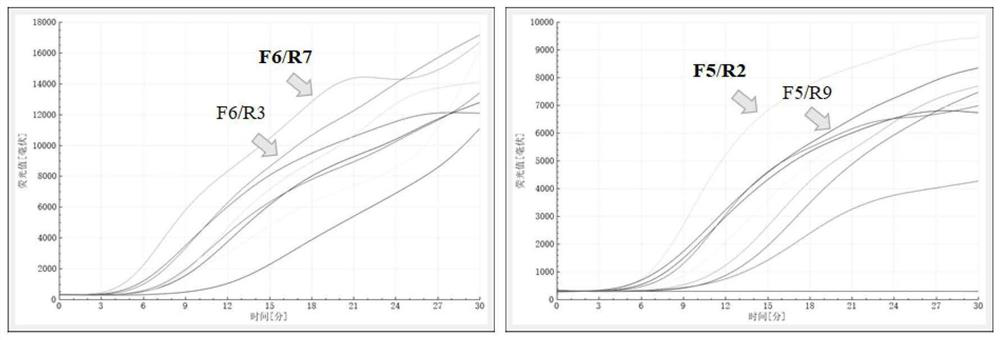Primer pair, probe and kit for detecting African swine fever virus and application of primer pair, probe and kit
An African swine fever virus and primer pair technology, applied in the field of bioengineering, can solve the problems of extremely high primer design requirements, huge economic and time costs, etc., and achieve the effects of short detection time, improved detection sensitivity, and broad application prospects
- Summary
- Abstract
- Description
- Claims
- Application Information
AI Technical Summary
Problems solved by technology
Method used
Image
Examples
Embodiment 1
[0045] Primer and probe design and screening of embodiment 1 ASFV virus p72 gene
[0046] By searching the PubMed nucleic acid database, it was found that the gene sequence of ASFV p72 (B646L) was well conserved, but there were still individual base mutations ( figure 1 ). Taking GenBank: AY578706.1 as the reference sequence, the distribution of mutation bases was analyzed ( figure 2 ), and designed primers and probes in fragments with low frequency of base mutation (Table 1).
[0047] Table 1 Primers and probes of ASFV p72 gene
[0048]
[0049] Appropriate primer sequences are an important part of RPA high-efficiency amplification. First, probes are designed in sequences with three consecutive thymines (T), and the probes are modified with FAM fluorescein. Eleven pairs of primers were designed at different positions at both ends of the probe to screen out the most efficient combination of primers and probes (Table 1). During primer screening, pair the first forward p...
Embodiment 2
[0053] Example 2 The nestRPA detection of preferred primers and probe combinations for p72 gene to ASFV plasmid DNA
[0054] The plasmid DNA containing the ASFV p72 gene sequence was further diluted to 50 copies / uL, 20 copies / uL, 5 copies / uL, 2 copies / uL, and 1 copy / uL for testing the ability of nestRPA to detect the ASFV p72 gene . It was found that using the preferred primer pair and probe combination of the p72 gene to carry out nestRPA detection, the positive plasmid DNA containing the ASFVp72 gene fragment ( Figure 5 , Figure 5 The value unit in the legend is copy / uL), indicating that the nestRPA new technology can significantly improve the detection sensitivity of ASFV virus nucleic acid p72 gene.
Embodiment 3
[0055] Example 3 The nestRPA detection of the preferred primers and probe combinations of the p72 gene to the ASFV standard product DNA
[0056] With ASFV standard product DNA (pseudovirus culture fluid, containing p72 gene), its DNA content is 5.9 * 10 3 copies / uL, to verify the sensitivity of the p72 gene preferred primers. Take 200uL of the pseudovirus culture solution rewarmed and mixed at room temperature, use the column extraction method to extract DNA, and dissolve it in 20uL of enzyme-free water. According to the initial DNA content of the pseudovirus culture solution, the concentration of the standard DNA extraction solution is calculated to be about 5.9 × 10 4 copy / uL, that is, the p72 gene DNA concentration is 5.9×10 4 copy / uL.
[0057] The standard DNA extract was diluted 10 times, 100 times, 1000 times, 10000 times, 12500 times, 20000 times, 25000 times, 40000 times, 50000 times, 80000 times and 100000 times sequentially by doubling dilution method. Utilize th...
PUM
 Login to View More
Login to View More Abstract
Description
Claims
Application Information
 Login to View More
Login to View More - R&D
- Intellectual Property
- Life Sciences
- Materials
- Tech Scout
- Unparalleled Data Quality
- Higher Quality Content
- 60% Fewer Hallucinations
Browse by: Latest US Patents, China's latest patents, Technical Efficacy Thesaurus, Application Domain, Technology Topic, Popular Technical Reports.
© 2025 PatSnap. All rights reserved.Legal|Privacy policy|Modern Slavery Act Transparency Statement|Sitemap|About US| Contact US: help@patsnap.com



